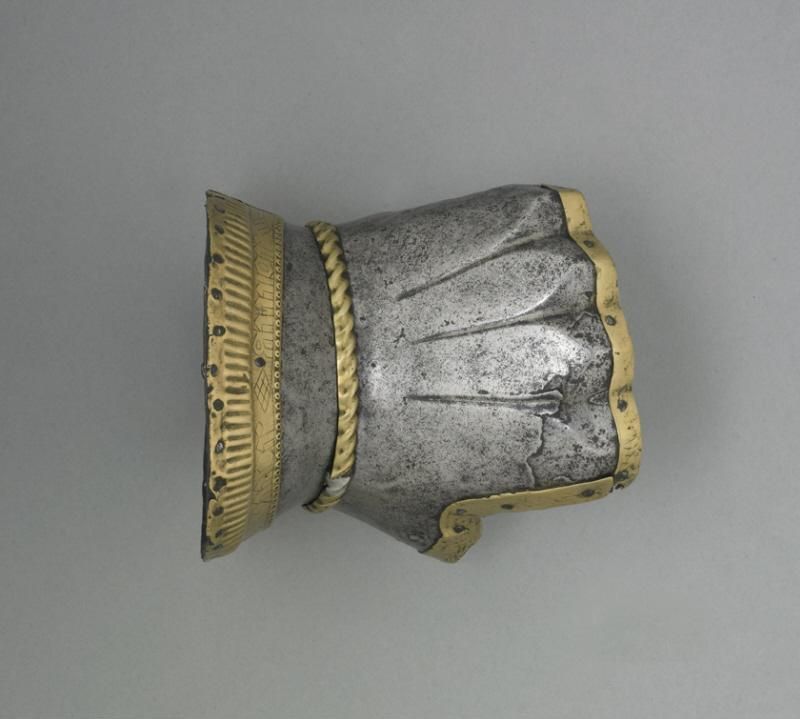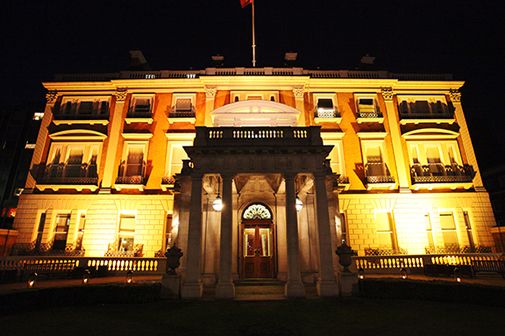
Gauntlet
Unknown Artist
‘Hourglass’ gauntlets are a signature aspect of late fourteenth- and early fifteenth- century armour, worn by countless men-at-arms during the innumerable conflicts of a turbulent age, which included the ‘Hundred Years’ War between France and England (1337-1453), the ‘Great War’ of the Teutonic Knights against the Poles and Lithuanians (1409-11), the mercenary campaigns of Sir John Hawkwood in Italy (1363-94), and the ‘Last Crusade’ of European forces against the Turks (1396). The hourglass shape, wherein the gauntlet cuff is more or less the same length as the metacarpal plate covering the back of the hand, originated in the need to protect the hand while also retaining full mobility in the wrist. The short, sharply-flared cuff allowed the hand to be encased in metal while still allowing it to flex at the wrist in all directions.
As was often the case with fine armour of the late fourteenth and early fifteenth centuries, the superb pair of hourglass gauntlets in the Wallace Collection are decorated with borders of embossed and engraved copper alloy. The decoration is characterised by an engraving technique today generally called ‘wiggle-work’ and still a common metalworking technique, most often found on American ‘Western’ jewellery and saddlery. It is produced through the use of a fine graving tool, held closely in the hand and ‘wiggled’ back and forth while also moving slowly forward, creating a zigzag line. The cuffs are also engraved with the repeating word AMOR (‘love’), perhaps expressing the chivalric aspirations of the owner. These superbly decorated objects are the only remains of what must have been a very rich armour.
Like many medieval objects in the Wallace Collection, these gauntlets were once owned by Alfred Émilien, Comte de Nieuwerkerke, who allowed their study by the famous medievalist Eugène Viollet-le-Duc. Through careful examination and reference to comparative material, Viollet-le-Duc was able to reconstruct their original appearance, complete with defensive assemblies for each finger. The finger plates are now lost, as they are on the other two surviving pairs of hourglass gauntlets decorated in the same style. One of these pairs, at Churburg Castle in South Tyrol, is very similar to the Wallace pair, if perhaps slightly more ornate. More lavish still is the pair in the Museo del Bargello in Florence, which, in addition to the borders and wrist bands, also carry four ribs of copper alloy on the back of each hand, corresponding to the four metacarpal bones.
c. 1390
Medium-carbon steel, air-cooled, and copper alloy
A251
Images and text © Wallace Collection, 2017
Where you'll find this

The Wallace Collection
Permanent collection
